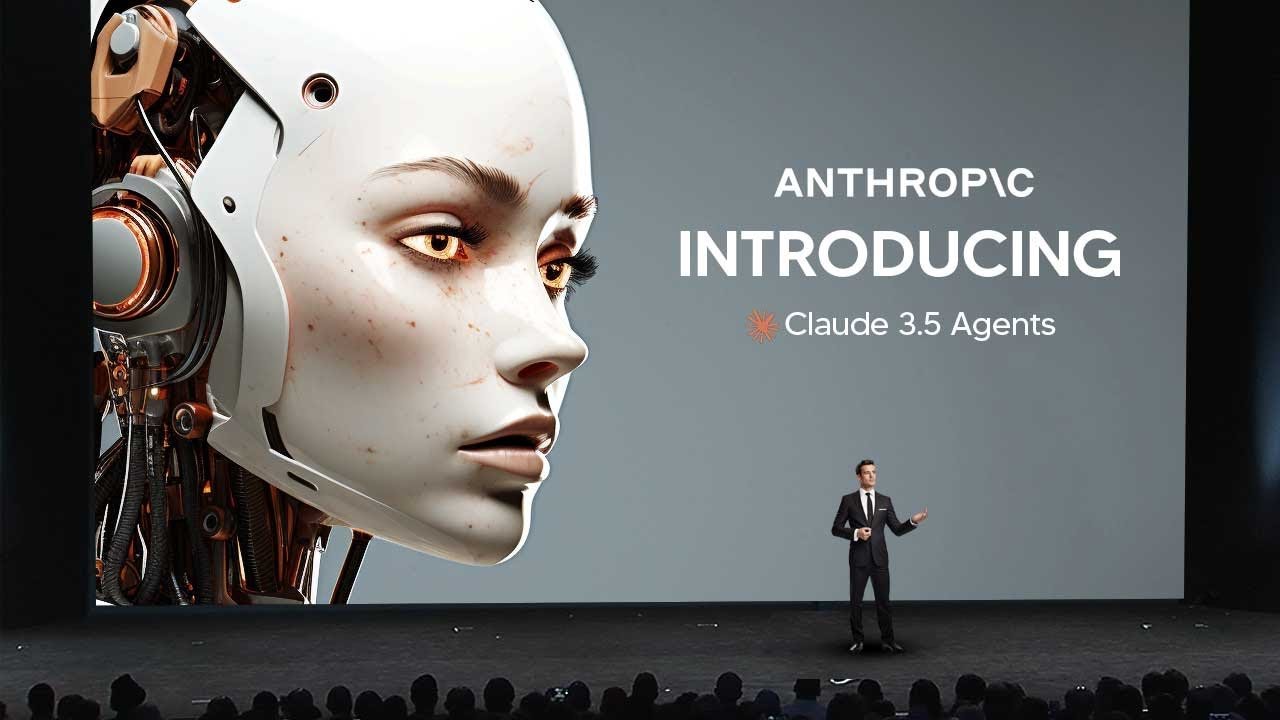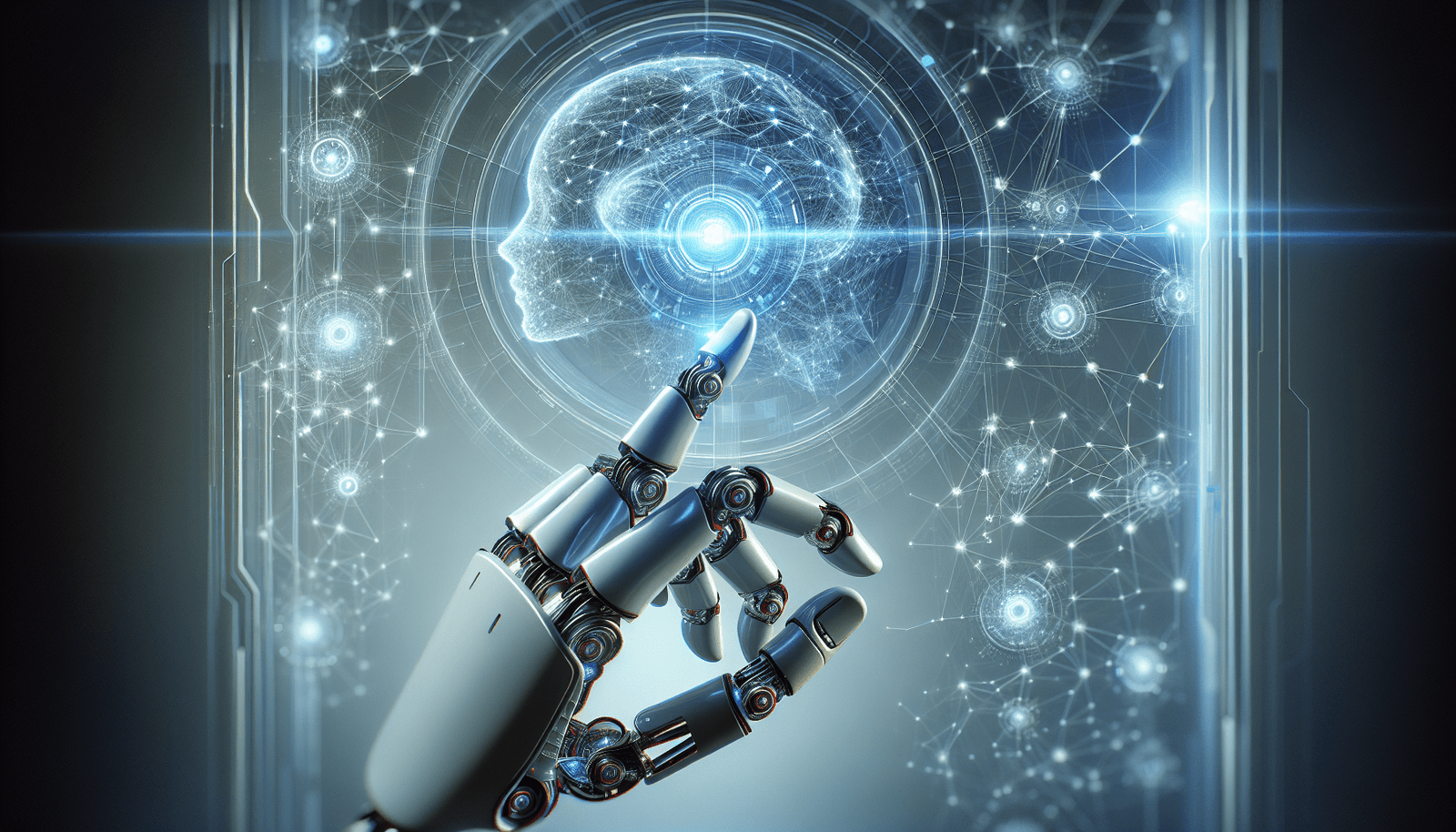With the unveiling of Claude 3.5’s new AI agents, the technological landscape is set to experience a significant shift. These agents, highlighted by their impressive coding capabilities and enhanced model performance, showcase notable advancements in AI integration with computer systems. The article presents a thorough analysis of Claude 3.5’s benchmark results and evaluates its capacities in reasoning, mathematics, and visual processing, establishing these models as leaders in the state-of-the-art AI domain.
The new functionality, allowing AI to interact with computer interfaces as humans do, signals a groundbreaking step forward. This capability, though experimental and released in public beta for developer feedback, promises to revolutionize task automation and human-computer interaction. The article also addresses the economic advantages, safety considerations, and future prospects, emphasizing the potential impacts and challenges posed by these innovative AI models. As developers and users adapt to these advancements, the AI community anticipates the early promise of models like Claude 3.5 becoming foundational to future AI applications.
The Arrival of Claude 3.5 AI Agents
Overview of Claude 3.5’s new AI agents
You are witnessing a transformative moment in AI technology with the introduction of Claude 3.5 AI agents. This innovative suite, comprising the Claude 3.5 Sonet and Claude 3.5 Hau, promises to redefine how artificial intelligence is integrated into various sectors. These models are the latest advancements from Anthropic, bringing forth enhancements in capabilities that cater not only to the general demands of AI but to specialized needs across different domains. The key focus is on agentic capabilities, which allow these AI agents to perform tasks with a pseudo-independent decision-making framework, pushing the boundaries of automation and machine learning to new heights.
Game-changing potential in various sectors
The impact of Claude 3.5 is game-changing across several industries. In software engineering, the Claude 3.5 Sonet sets a new benchmark with a performance score that eclipses its predecessors. It excels in coding and reasoning tasks, making it an invaluable tool for technology developers. Meanwhile, the Claude 3.5 Hau provides cost-effective solutions without compromising on speed, which is crucial for businesses looking to leverage AI for economic gain. These advances will influence sectors ranging from finance to healthcare, where decision-making processes can be automated with increased accuracy and efficiency. This integration promises not only to improve outcome predictions but also to enhance overall operational efficiency.
Model Enhancements in Claude 3.5
Key improvements in AI capabilities
Claude 3.5 introduces several enhancements that set it apart from its predecessors. The upgrades focus on boosting the AI’s understanding, learning, and interactive capabilities. With improved natural language understanding and enhanced reasoning abilities, Claude 3.5 excels in tasks previously dominated by other state-of-the-art models. These improvements include more efficient coding ability, better analytical capacity, and superior tool usage. Its ability to perform complex tasks with improved speed highlights the success of the model’s iterative enhancements and reflects a significant leap in AI development.
Comparison with previous Claude versions
When you compare Claude 3.5 to its previous iterations, the advancements are clear and compelling. Claude 3.5 Sonet offers a significant improvement, especially in coding, with a nearly 50% benchmark on software engineering tasks compared to earlier versions. The Claude 3.5 Hau model builds on this by providing a faster and more cost-efficient option. These improvements in performance metrics showcase Anthropic’s commitment to evolving their AI models towards higher efficiency and capability. The step-up from earlier versions marks a dramatic evolution in both processing power and versatility, providing users with tools that outperform many of the industry’s current offerings.

This image is property of i.ytimg.com.
Revolutionizing Computer Interaction
Integrating AI with desktop systems
Claude 3.5 revolutionizes computer interaction by integrating AI directly with desktop systems, simulating human-like interactions through the use of a screen, cursor, and typing. This novel capability, currently in public beta, reflects a significant leap forward in AI’s ability to assist with everyday computing tasks. Users can experience a seamless integration of AI into their workflows, allowing for improved efficiency and productivity. Whether automating administrative tasks or assisting in software development, AI’s intuitive interface makes it an indispensable tool in modern desktop environments.
Public beta of new AI computer use capabilities
The public beta for AI’s computer use capabilities allows developers to test and refine how the AI model functions in real-world environments. This phase is critical for gathering user feedback to enhance the system’s functionality and reliability. As developers explore this feature, they encounter both the potential and the developmental challenges of AI-driven computer interaction. The beta stage is designed to iron out any issues, ensuring that the technology vigorously supports users while maintaining the standards of innovation and reliability expected from Anthropic’s advanced AI models.
Comprehensive Performance Overview
Summary of Claude 3.5’s performance boosts
Overall, Claude 3.5 demonstrates impressive performance boosts that elevate it above prior iterations and many competing models. With significant improvements in coding, mathematical reasoning, and tool utility, the model proves to be a robust multi-disciplinary tool. The implementation of agentic capabilities allows it to undertake complex analytical tasks with minimal human intervention, showcasing its potential to transform various industry operations. Its enhanced reasoning and comprehensive understanding enable it to tackle a wider range of tasks with increased efficiency.
User feedback and ongoing development
Feedback from early users of Claude 3.5 has generally been positive, highlighting its advanced capabilities and intuitive user interaction. Users appreciate the significant leaps in performance metrics, particularly in coding and reasoning tasks. However, as with any evolving technology, there are areas identified for further enhancement, including fine-tuning its responsiveness and handling of nuanced language tasks. Ongoing development is focused on incorporating this feedback to refine Claude 3.5, ensuring that future updates continue to meet the needs of users while setting new standards in AI performance.

Benchmark Results and Analysis
Performance on standard benchmarks
Claude 3.5 performs exceptionally well on standard benchmarks, such as GP QA Diamond, setting new records in its class. It achieves significant gains in areas like software engineering and high school math competitions, indicating its prowess in both academic and practical arenas. These benchmarks serve as a testament to the model’s improved capabilities, highlighting its adeptness at meeting high-performance standards in diverse applications.
Significant achievements on GP QA Diamond
On the GP QA Diamond benchmark, Claude 3.5 stands out for its remarkable performance, surpassing even industry-leading models like GPT-40 and Google’s Gemini 1.5 Pro. The model’s achievements are particularly notable in graduate-level reasoning, demonstrating sophisticated understanding and response capabilities. This positions Claude 3.5 as a formidable player in the realm of high-performance AI, with potential to push the boundaries of what machines can analyze and solve.
A Deep Dive into Reasoning Capabilities
Evaluation of graduate-level reasoning
Claude 3.5 excels in graduate-level reasoning tests, showcasing its ability to process complex information with a degree of sophistication akin to human cognition. The model is able to understand and generate nuanced responses, making it particularly useful for academic and professional applications that require detailed analysis and synthesis of information. This capability underscores its versatility, opening doors to its use in educational and research settings where deep learning and reasoning are paramount.
Comparative analysis with other models
When compared to other state-of-the-art models, Claude 3.5 not only holds its own but often surpasses them in reasoning tasks. Its performance outpaces that of other leading AI models, highlighting its superior analytical capabilities and depth of understanding. This superiority in reasoning not only enhances its utility across a wide range of complex tasks but also cements its position as a leading choice for users relying on AI for critical decision-making processes.

Mathematical Proficiency of Claude 3.5
Enhancements in handling mathematical tasks
With Claude 3.5, handling mathematical tasks has seen significant improvements. The model is capable of tackling complex problems with increased accuracy, performing exceptionally well in standardized math assessments where it demonstrates a noticeable leap over its predecessors. This proficiency is critical for applications in fields like engineering, finance, and data science, where precise mathematical computations are essential.
Improved accuracy and reliability
The accuracy and reliability of Claude 3.5 in mathematical tasks have greatly improved, making it a dependable choice for users requiring exact solutions. Enhanced algorithms and computational improvements ensure that users receive precise outputs, reducing errors and enhancing efficiency. This reliability allows users to confidently employ Claude 3.5 in both routine and intricate mathematical analyses, expanding its use across various applications and sectors.
Exploring Vision Capabilities
AI’s ability to process and interpret visual data
One of Claude 3.5’s standout features is its advanced ability to process and interpret visual data. This capability allows it to understand and react to graphical content in a way that closely mimics human perception. It can decipher complex images, charts, and visual inputs, enabling applications in areas like security, healthcare imaging, and augmented reality. This skill allows the AI to bridge the gap between data perception and processing, offering a fuller understanding of multimedia content.
Applications in real-world scenarios
Claude 3.5’s visual capabilities open up a plethora of real-world applications. They can be used in security systems to analyze video feeds for identifying potential threats or anomalies. In healthcare, these capabilities enable enhanced diagnostic imaging, assisting physicians in making informed decisions. Additionally, in augmented and virtual reality environments, the AI can enhance user experiences by providing relevant contextual information and interactions based on visual inputs. These applications illustrate the powerful potential of integrating advanced AI vision capabilities into various industries.
Focus on Specialized Benchmarks
Domain-specific performance analysis
Claude 3.5 shines when evaluated on specialized benchmarks, showcasing its tailored efficiency in domain-specific tasks. Whether assessing performance in fields like software development or natural language processing, Claudes exhibit high proficiency, demonstrating their adaptable applicability across numerous sectors. Such performance analysis confirms the broad capabilities of Claude 3.5 in handling specialized tasks that require advanced understanding and execution.
How Claude 3.5 excels in agentic coding and tool use
In agentic coding and tool usage, Claude 3.5 sets a new standard. By achieving an impressive benchmark in software engineering tasks, it demonstrates its ability to autonomously interact with and manipulate coding environments effectively. This excellence ensures Claude 3.5 remains relevant to developers and technologists seeking efficient AI integration into their projects. The model’s proficiency in automated tool use further exemplifies its aptitude for streamlining processes, reducing development time and increasing output precision.
Conclusion
Recap of Claude 3.5’s innovations and impact
Claude 3.5 represents a quantum leap in AI technology with its enhanced capabilities, performance improvements, and multifaceted applications. From revolutionizing interactions with computers to excelling in specialized tasks and benchmarks, it offers a comprehensive suite of tools for advancing AI applications across industries. Claude 3.5 not only meets current technological demands but anticipates future needs with its game-changing innovations.
Future outlook and ongoing developments
Looking ahead, the future of Claude 3.5 and similar AI technologies appears promising. As the beta phase progresses, ongoing development will address user feedback and enhance capabilities further, ensuring the continual evolution of performance and functionality. Claude 3.5’s advancements pave the way for its integration into new domains, pushing the boundaries of AI to new frontiers. Its ongoing improvements promise to maintain its status as a leading AI model, providing users with ever-richer tools for innovation and efficiency.